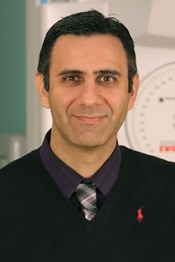Program Information
Fitting Four NTCP Models to Treatment Outcome Data of Salivary Glands Recorded Six Months After Radiation Therapy for Head and Neck Tumors
P Mavroidis1*, A Price1 , M Kostich1 , R Amdur2 , W Mendenhall2 , N Sheets3 , R Green1 , S Das1 , L Marks1 , B Chera1 , (1) University North Carolina, Chapel Hill, NC, (2) University of Florida, Gainesville, FL, (3) University of North Carolina, Raleigh, North Carolina
Presentations
SU-D-204-5 (Sunday, July 31, 2016) 2:05 PM - 3:00 PM Room: 204
Purpose: To estimate the radiobiological parameters of four popular NTCP models that describe the dose-response relations of salivary glands to the severity of patient reported dry mouth 6 months post chemo-radiotherapy. To identify the glands, which best correlate with the manifestation of those clinical endpoints. Finally, to evaluate the goodness-of-fit of the NTCP models.
Methods: Forty-three patients were treated on a prospective multi-institutional phase II study for oropharyngeal squamous cell carcinoma. All the patients received 60 Gy IMRT and they reported symptoms using the novel patient reported outcome version of the CTCAE. We derived the individual patient dosimetric data of the parotid and submandibular glands (SMG) as separate structures as well as combinations. The Lyman-Kutcher-Burman (LKB), Relative Seriality (RS), Logit and Relative Logit (RL) NTCP models were used to fit the patients data. The fitting of the different models was assessed through the area under the receiver operating characteristic curve (AUC) and the Odds Ratio methods.
Results: The AUC values were highest for the contralateral parotid for Grade ≥ 2 (0.762 for the LKB, RS, Logit and 0.753 for the RL). For the salivary glands the AUC values were: 0.725 for the LKB, RS, Logit and 0.721 for the RL. For the contralateral SMG the AUC values were: 0.721 for LKB, 0.714 for Logit and 0.712 for RS and RL. The Odds Ratio for the contralateral parotid was 5.8 (1.3-25.5) for all the four NTCP models for the radiobiological dose threshold of 21Gy.
Conclusion: It was shown that all the examined NTCP models could fit the clinical data well with very similar accuracy. The contralateral parotid gland appears to correlated best with the clinical endpoints of severe/very severe dry mouth. An EQD2Gy dose of 21Gy appears to be a safe threshold to be used as a constraint in treatment planning.
Contact Email:

